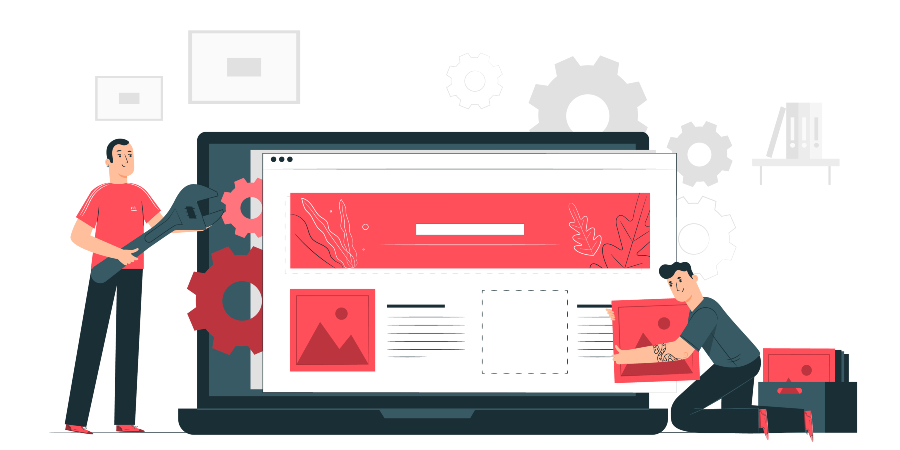Evolving Trends of Web Design and How It Has Shaped Today’s Web Page
Web design has come a long way since the early days of the internet. From simple HTML pages to complex, interactive websites that are both creative and aesthetically pleasing, the technology behind web design has evolved rapidly in the past few decades. As we move further into the digital age, the trends in web design are continuing to evolve as well.
Basic Web Pages of Days Gone
In the early days of the internet, web design was a fairly straightforward process. Websites were essentially static pages made up of hyperlinks, simple text and a few images. Designers relied heavily on HTML and CSS to create these pages, and the focus was on creating a functional website that is able to load quickly with the limited bandwidth available during that time. The appearance of the websites didn’t really matter so much as they got their content out.
Visuals Start to Become Desirable
However, as the internet grew in popularity, what was expected began to evolve and the demands on web designers began to change. Users wanted more from their websites, it needed to utilize the latest trends in web design and become more attractive in order to attract viewers and users, since competition was building up and people tended to be more interested in well-designed websites. Due to these transformations, designers had to adapt to keep up. They began to incorporate more interactive features, such as dropdown menus and clickable buttons, to make websites more engaging, visually appealing, and also user-friendly. People had come to expect a certain standard of design when visiting websites.
Web 2.0 Brought with It Revamped Websites
In the mid-2000s, the rise of Web 2.0 brought a new wave of innovation to web design. Designers began to focus more on creating visually stunning websites, using more advanced graphics and animation to capture users’ attention. This trend was aided by the rise of powerful new tools like Adobe Flash, which made creating complex, interactive websites that caught the eye and created stunning visuals easier.
Unexpectedly, the reliance on Flash proved to be short-lived. As smartphones and tablets became the primary devices for accessing the internet, designers had to adapt again. Flash was notoriously slow and resource-intensive, making it unsuitable for mobile devices with limited processing power and battery life. As a result, designers began to shift towards more lightweight, mobile-friendly designs.
The Emergence of Smartphones Have Transformed Web Design
Today, the trend toward mobile-first design is stronger than ever. With over half of all internet traffic now coming from mobile devices, designers are putting mobile compatibility at the forefront of their designs. This means creating responsive websites, meaning they adjust to the size of the user’s screen, and using techniques like “lazy loading” to ensure that websites load quickly, even on slow mobile connections.
The emphasis on user experience (UX) design is becoming another key factor in web design. Rather than simply focusing on visually appealing websites, designers are now placing a greater emphasis on creating websites that are intuitive and easy to navigate. This means designing websites with clear, easy-to-understand navigation menus, intuitive layouts, and minimal distractions.
Implementing SEO into Website Design
SEO has also become part and parcel of website design. The common misconception is the belief that SEO doesn’t play a big role in web design, but it does. Websites which are cohesively designed naturally attract more views, and search engines will boost visibility for websites with high user retention. An ugly website with badly implemented UX often has a high bounce rate. But of course, when you have quality content, users will stay to read which leads to an increase in viewership or rate of retention, which is why First Page Digital Reviews have become almost synonymous with website design in terms of desirability and overall success.
The Future of Web Design
In addition to these trends, web designers are also using new technologies like artificial intelligence (AI) and machine learning (ML) to enhance the user experience. AI and ML can analyze user behavior and preferences and personalize the website experience based on those insights. This can include everything from recommending products to users based on their browsing history to automatically adjusting the website layout to suit their preferences better.
Trends in web design are constantly evolving as technology advances and user expectations change. From simple, static HTML pages to complex, interactive websites, the evolution of web design has been driven by a desire to create visually appealing and functional websites. As we move into the future, it will be fascinating to see what new trends in web design and technologies emerge to shape the future of web design, especially with the Metaverse on the horizon and A.R technology becoming a key focus in the next few months.


